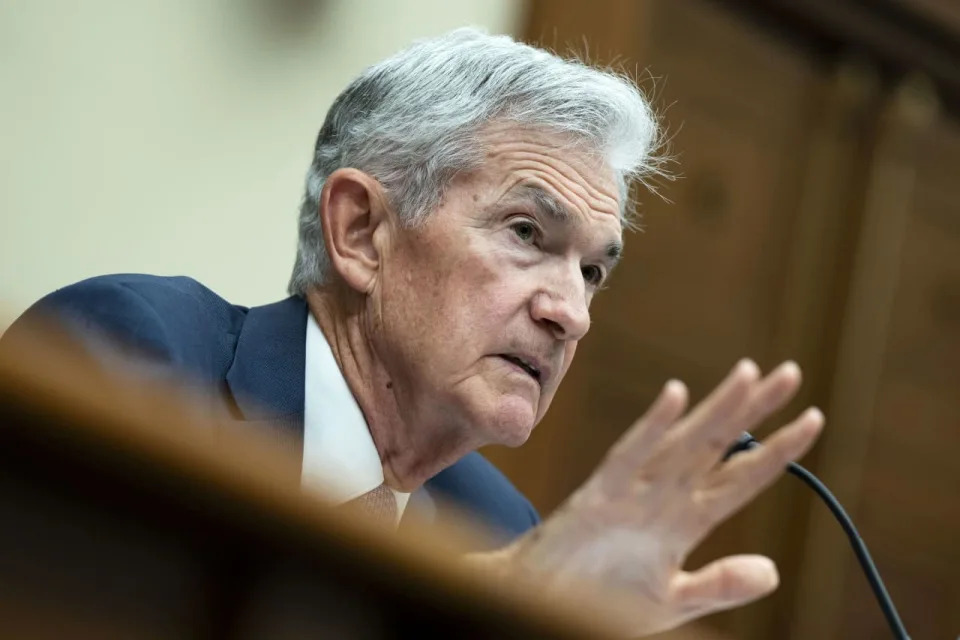
Markets will be paying close attention Wednesday to how much confidence Federal Reserve Chair Jerome Powell signals the central bank has to potentially begin cutting interest rates as soon as September.
“It would be surprising to the market if he didn’t confirm that they’re ready to move at the next meeting,” Rick Rieder, BlackRock’s chief investment officer of global fixed income and head of the firm’s global allocation investment team, said in a phone interview. “I would think there’s an awful lot of confidence that’s been built over the last few months” for the Fed to communicate that it could “soon” cut rates, Rieder noted.
Inflation “clearly” has moved down “significantly,” he said, adding that the U.S. economy remains in “pretty good shape” despite showing signs of softening.
The Fed will issue a policy statement at 2 p.m. Eastern time Wednesday, after concluding its two-day meeting, with Powell scheduled to host a press conference at 2:30 p.m. Investors largely expect the Fed will decide to keep its benchmark rate at the current elevated level of 5.25% to 5.5% until its next policy meeting in September, when it may start lowering it.
The Fed has been holding its policy rate at the highest level since 2001 , in a bid to bring inflation down durably toward its 2% target by cooling economic demand.
Shaving a percentage point off the Fed’s current rate over the next six to nine months “seems like it should be an easy endeavor,” said Rieder. Considering the decline in the U.S. inflation rate, “it’s a pretty low bar” in his view for the Fed to start reducing its now “very restrictive” federal-funds rate toward a just “restrictive” level of around 4% to 4.5%.
But “how much further they go from there is certainly open-ended and a question,” Rieder said.
On Wednesday morning, traders in the fed-funds futures market were pricing in an 87.7% chance the Fed will start lowering its benchmark rate in September by a quarter percentage point, according to the CME FedWatch Tool. They saw smaller chances of deeper cuts from the Fed that month.
Looking further out, fed-funds futures were pointing to potentially three rate reductions of a quarter percentage point each by December, and maybe seven such cuts by September 2025.
“That’s aggressive,” Rieder said of market expectations for 2025. “We’re going to see a lot of information before we get seven rate cuts.”
‘Good place’
George Catrambone, DWS Group’s head of fixed income for the Americas, told MarketWatch he expects Powell will Wednesday “start to pave the way to a September cut” and point to a more “balanced” economy.
With inflation trending lower, he said Powell may bring the maximum-employment part of the Fed’s dual-mandate more into focus.
The U.S. unemployment rate recently has risen, standing at 4.1% in June . While that’s still historically low, investors are monitoring the labor market for signs of weakening , as the Fed continues to aim to bring inflation down to its target without triggering a recession.
“For now, the labor market is in a good place,” David Mericle, chief U.S. economist at Goldman Sachs Group, said in a research note at the end of last week. “It is roughly as tight as before the pandemic, a period that struck a very favorable balance between full employment and near-target inflation.”
A reading earlier this month from the consumer-price index showed U.S. inflation fell in June for the first time since 2020 , with its annual rate easing to 3%. Core inflation, which excludes energy and food prices, rose 3.3% in the 12 months through June based on CPI data.
The CPI report showed shelter prices finally are coming down , according to Rieder. The moving average for core CPI inflation excluding shelter is 2% on a six-month annualized basis, he said.
Meanwhile, Yardeni Research has pointed to deflationary trends, including recent pressures among retailers as well as falling prices in commodity markets and durable goods.
See: Diminished Big Mac appetite is a sign of deflationary trend, says Yardeni
There are “pockets of deflation, which will give consumers some relief,” Ed Yardeni, president of Yardeni Research, said in a phone interview. Deflation means prices are coming down, whereas disinflation refers to a decline in the rate of inflation, he noted.
The U.S. stock market was rising Wednesday morning, as investors awaited the Fed’s interest-rate decision.
The S&P 500 SPX was up a sharp 1.5%, while the technology-heavy Nasdaq Composite COMP jumped 2.3% and the Dow Jones Industrial Average DJIA rose 0.3%, according to FactSet data, at last check.
As for the bond market, Treasury yields were falling Wednesday morning.
The yield on the 10-year Treasury note BX:TMUBMUSD10Y was down about five basis points at around 4.09%, while the two-year Treasury yield BX:TMUBMUSD02Y declined about two basis points to around 4.34%, FactSet data show, at last check. That’s after the two-year Treasury rate fell Tuesday to 4.359%, its lowest level since Feb. 1 based on 3 p.m. Eastern time levels, according to Dow Jones Market Data.
Although Yardeni finds it hard to see why rate interest-rate cuts are needed when the U.S. economy is “performing so well” at the current levels, he said the market would be “very surprised” by any notion of no rate cut in September.
“If the message today is hawkish, that the Fed wants to get more confidence that inflation is coming down to 2%, the market would react badly to it,” he said.
